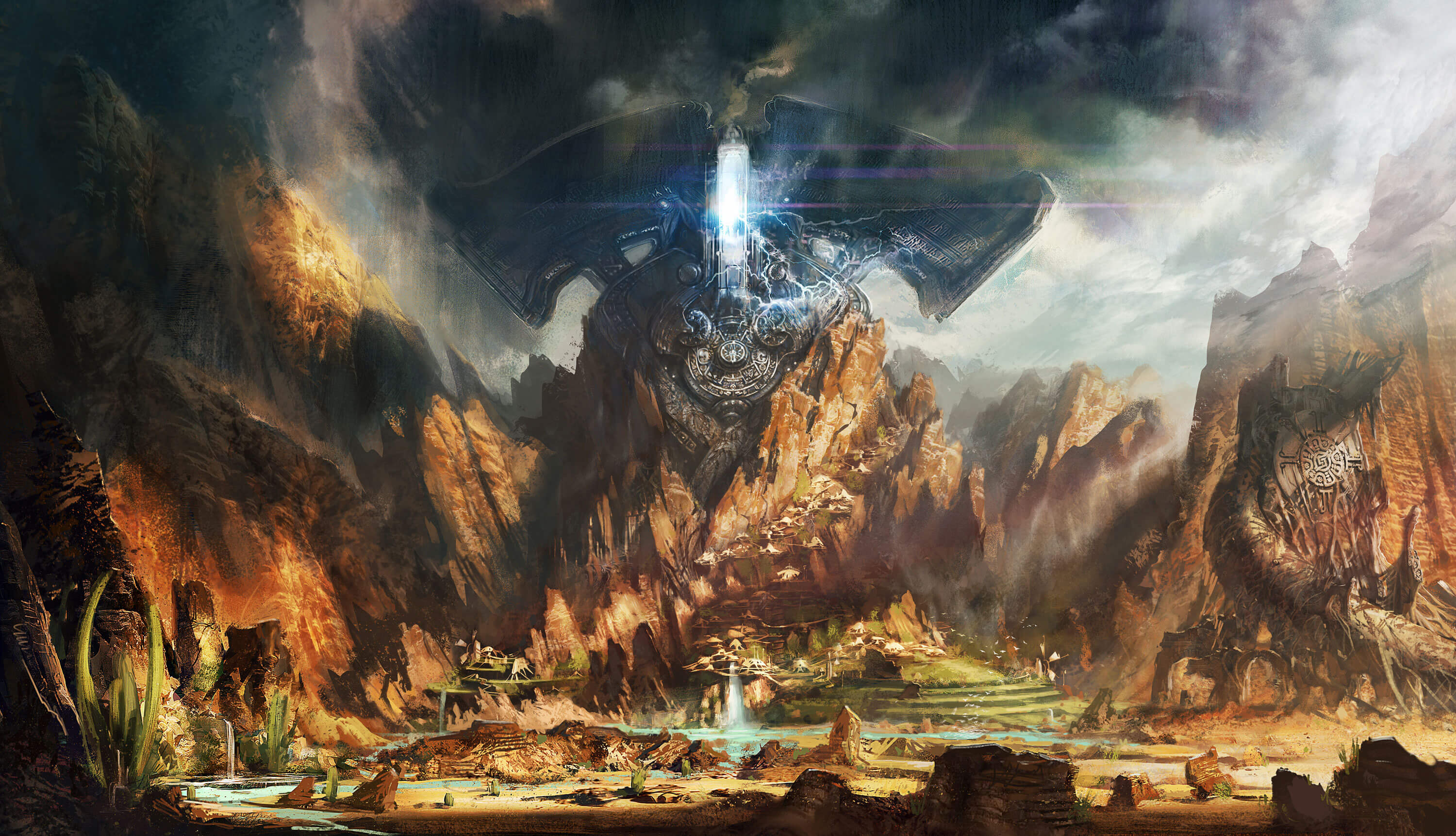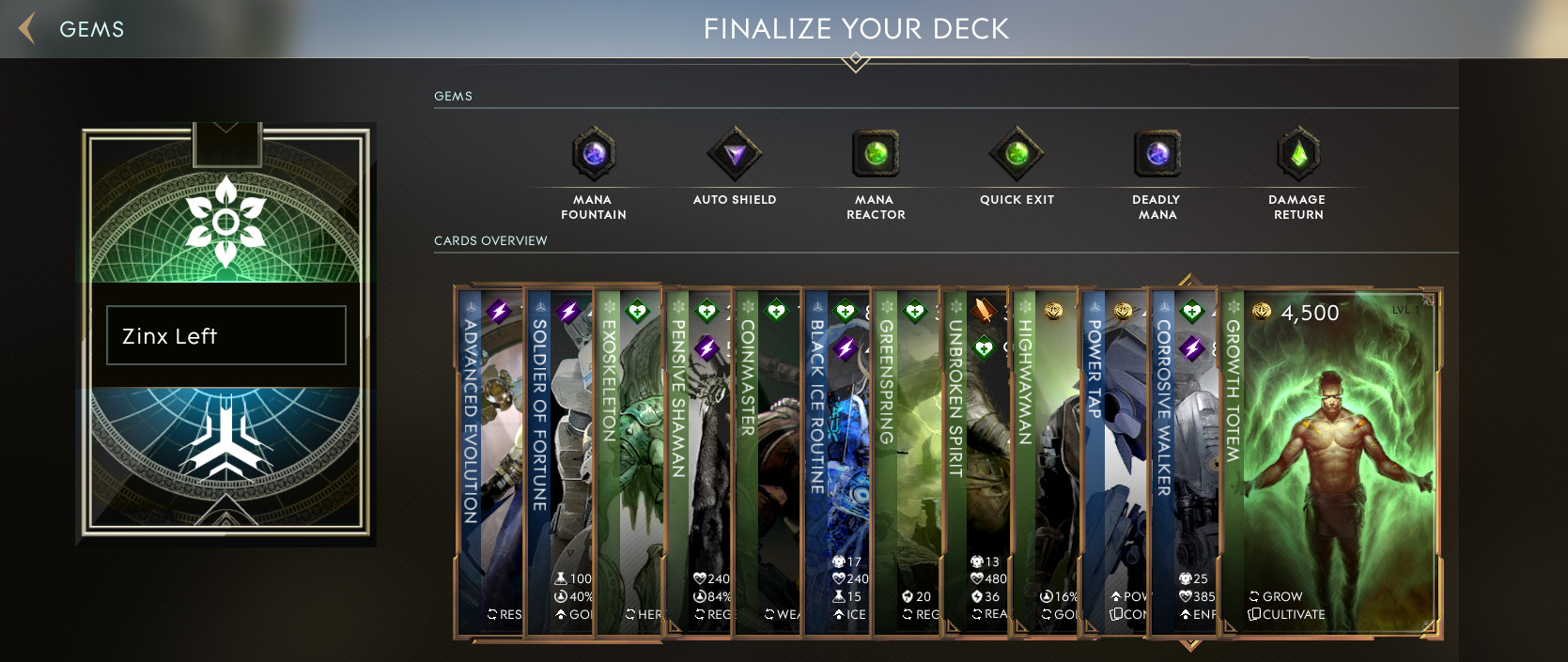Epic had to kill Paragon twice to save it
After two big reinventions, Paragon has become a smarter, faster action MOBA.

I don’t think I’ve ever seen a game change as dramatically as Paragon. Most early access games focus on adding promised features, and most multiplayer games with open betas focus on incremental balance changes. But developer Epic Games has never hesitated to totally rewrite Paragon’s fundamental systems if it meant getting closer to their action MOBA ideal. And that's exactly what they've done in the past year—twice.
As in other MOBAs like League of Legends and Dota 2, Paragon is a 5-on-5 game about shepherding your team's minions down three lanes and forming up into groups for big, climactic team fights. Unlike those games, though, Paragon's third-person, behind-the-back perspective makes it feel and play less like a strategy game and more like an action game. Paragon entered early access on Epic's own launcher in March 2016, and ran into serious growing pains almost immediately. Simply put, ranged heroes were busted; they could mow down melee heroes before they even got close. That was addressed relatively quickly, though, and the game entered open beta on August 16—almost exactly a year ago. But the biggest changes were still to come.
In December, the Monolith Update dropped, and virtually everything changed. The map shrunk dramatically, lanes were realigned, jungling was totally reworked and every single hero was retooled from the ground up. As we said at the time, “the patch notes read less like an update and more like a manual for a new game.”
Monolith was a massive improvement, but it didn’t take long for new problems to crop up. The cripplingly linear card itemization system—which amounted to blindly purchasing whatever gave you the most attack speed, damage or health—sucked all strategy out of building. To make matters worse, several new heroes felt like better versions of existing heroes, so they didn’t so much expand the roster as artificially lengthen it.
Throughout the first half of 2017, Epic hammered a few busted heroes into line and made some modest improvements to the card system. But players were hungry for big changes. So news of Paragon version 42, better known as The New Dawn, couldn’t have come sooner. Even so, nobody was holding their breath on another Monolith. When the update finally launched last week, many went in with low expectations, at most expecting yet another defibrillation of content to pacify the community.
Instead, Paragon feels born again. Again. Epic didn’t just improve the card system, they replaced it. And not just that. Like Monolith before it, The New Dawn also rebalanced every hero, increasing baseline attack speeds and reducing cooldowns across the board, so games are not only more strategic, but quicker and more intense.
A new dawn
The gist is this. Rather than earning card power and purchasing cards in each game, you now earn gold and purchase attribute points. There are three attributes: agility (attack), vitality (health) and intelligence (mana). Purchasing attribute points provides permanent stat bonuses, and once you’ve saved up enough points, you can buy cards with them. As you hit certain attribute point milestones (1, 7, 13, 19 and 25 points), you also unlock slots for gems to support and accentuate your cards.
The biggest gaming news, reviews and hardware deals
Keep up to date with the most important stories and the best deals, as picked by the PC Gamer team.
Building a deck is now much more strategic. Before, you just had to pick a stat or two to focus ons. Now you have to think about how much you want to invest in each attribute, what gems you’ll unlock along the way, and what cards you’ll buy with your points. This system is also more dynamic because you don’t have to return to base to purchase attribute points and you can buy or sell cards whenever you want without penalty.
There’s a ton of variety on display here. You can use up to six gems, for starters, and each one can totally change the way you play. Multishot, an agility gem, gives ranged basic attacks two additional projectiles, which is a huge deal for ranged carries. Healing Spells, an intelligence gem, heals you for five percent of the ability damage you deal, which can help squishy casters stay in the fight. Reflexive Purify, a vitality gem, removes negative statuses after you take 300 damage, which can render high-health tanks virtually immune to crowd control effects like stun and slow.

The 115 new cards introduced in The New Dawn are even more diverse. They’re spread across five distinctly flavored affinities, and every single one comes with creative passive and active abilities on top of baked-in stat boosts. Veil Stepper makes you invisible for three seconds whenever you cross through one of the fog walls which separate lanes. Glycerin Dawn lets you shoot a fireball for heavy ability damage. Black Ice Routine gives you an area-of-effect attack that also slows nearby enemies. Awaken the Emeric converts nearby enemy minions to your team and buffs them. Domain of Stillness suspends all nearby heroes in stasis for two seconds. Some cards can’t be unequipped, some disappear when you die, some get cheaper as you buy points—the list goes on.
The kicker is that all cards are now available to all heroes. In the past, you built decks using cards from each hero’s assigned affinities. Now affinities are assigned to individual decks and you can use any of your decks with any hero. This fosters huge room for specialization and breathes new life into long-forgotten heroes. It changes the way you view and use abilities. You can build five different decks using different affinity combinations, use them with the same hero and play that hero totally differently.
Finally, deck building feels like something out of an actual card game. It’s not about raw stats anymore. It’s about leveraging effects that combine in cool ways. It’s about building a curve with early-game essentials, mid-game upgrades, late-game play-makers and tech cards to counter specific heroes. You can only equip three cards at once, but you can put 12 cards in your deck and swap whenever you want. So you’re constantly thinking about what card to buy next, whether you want to sell something else to get it early, and whether you’re better off unlocking that gem first.

The next Monolith
I enjoy Paragon precisely because it is more action-based than traditional, top-down MOBAs, and on this front as well, it has never felt better. Stringing attacks together as a melee hero and lining up shots as a ranged hero is uniquely satisfying in third-person. It’s a MOBA through and through, but Paragon offers a different experience that relies on a different, and for me more exciting, skill set.
It’s not all peaches and cream, though. The variety of new gems and cards is hampered by how hard it can be to get the ones you want, even if you’re willing to spend money on the game. There’s no shortage of post-game loot chests, but there’s also no way to craft specific cards and gems. I also think certain types of cards should be available to more affinities. For instance, only one affinity has access to placeable wards which alert you to nearby enemies, which can make it feel like a must-pick when you’re playing a dangerous lane like mid.
Left: the old attack speed. Right: New, faster attack speed.
In other areas, Paragon has also grown inexplicably stingy. If you want to unlock a hero’s ‘mastery’ and the skins that come with it, you have to shell out 500,000 reputation, the free currency, or $5 worth of coins, the paid currency. Masteries used to cost 75,000 reputation and it’s hard to earn coins freely, so decking out your favorite heroes can be a slog. It’s also frighteningly easy to lose a fortune to the many skins in the store, which are $5 at their cheapest and $10 on average.
But most of my nitpicks are just that. Stat breakdowns are needlessly arcane and there are still a few busted heroes running around, but that doesn’t change the fact that Paragon has been reinvigorated. It once again feels like a completely different game, and I’m looking forward to really diving into its new rules, relearning my favorite heroes and testing out new ones.

Austin freelanced for PC Gamer, Eurogamer, IGN, Sports Illustrated, and more while finishing his journalism degree, and has been a full-time writer at PC Gamer's sister publication GamesRadar+ since 2019. They've yet to realize that his position as a staff writer is just a cover-up for his career-spanning Destiny column, and he's kept the ruse going with a focus on news, the occasional feature, and as much Genshin Impact as he can get away with.

